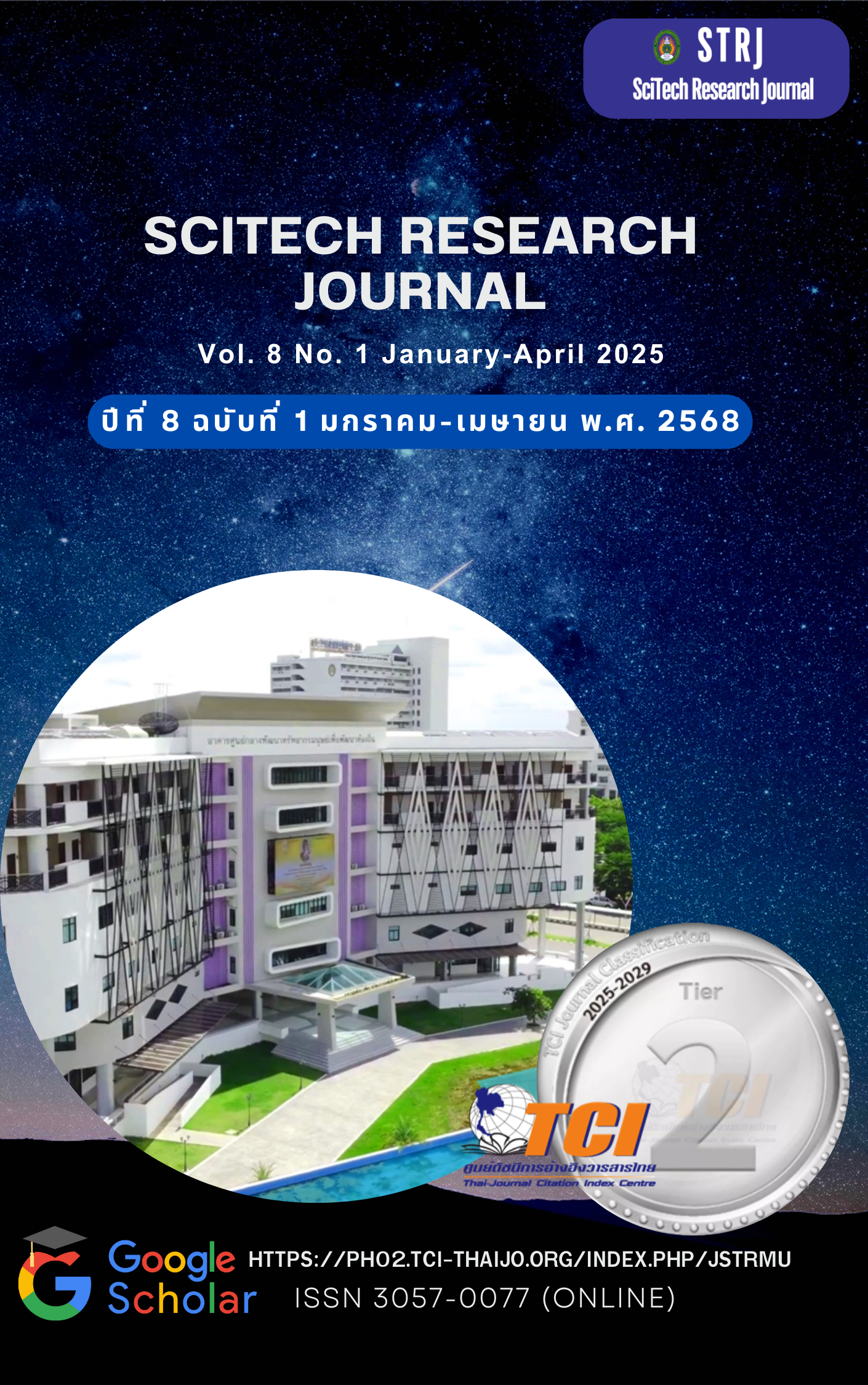Effects of pulmonary rehabilitation program on pulmonary function and health-related physical fitness of elderly after COVID-19 infection in Koh Kaew Sub-district, Phuket Province
Keywords:
Pulmonary rehabilitation program, physical fitness, Elderly, COVID-19Abstract
This quasi-experimental study aimed to compare the effect of pulmonary rehabilitation program on pulmonary function and physical fitness of elderly after COVID-19 infection. The subjects were 24 elderly with post COVID-19 infection. Pulmonary rehabilitation program was performed with 9 poses every day for 8 weeks. Before and after rehabilitation program, all participants were assessed for pulmonary function with spirometer, physical fitness with hand grip, shoulder girdle flexibility and 6-minute walk test. Data were analyzes using descriptive statistics and paired t-test.
The results showed that mean age was 63.17 + 2.60 years and body mass index 22.47 + 3.03 kg/m2 after 8 weeks of pulmonary rehabilitation program, pulmonary function included forced expiratory volume in 1 second (FEV1) and forced expiratory volume in 1 second/forced vital capacity (FEV1/FVC) were increased significantly (P<0.05). Physical fitness included hand grip, shoulder girdle flexibility and 6-minute walk test were also improved significantly (P<0.05).
In conclusion, the pulmonary rehabilitation program can improve pulmonary function and physical fitness. These can be improved to health and quality of life for elderly or post COVID-19 patients.
References
Chanbamrung, N. (2017). The effect of Pilates exercise training program on lung capacity and respiratory muscle strength in elderly females. Master of Science Thesis, Faculty of Sports Science, Chulalongkorn University.
Fumagalli, A. et al. (2021). Pulmonary function in patients surviving to COVID-19 pneumonia. Infection, 49, 153-157.
Heffernan, K. S., Ranadive, S. M. and Jae, S. Y. (2020). Exercise as medicine for COVID-19: On PPAR with emerging pharmacotherapy. Medical hypotheses, 143, 110197.
Kanchanabenyapha, S. Udomputthachat, J. & Phongnarat, P. (2023). The efficacy of yoga on chest expansion and lung function in post-COVID-19 patients at Kumphawapi Hospital. Udon Thani Hospital Medical Journal, 31(3), 346-355.
Liu, K., Zhang, W., Yang, Y., Zhang, J., Li, Y. and Chen, Y. (2020). Respiratory rehabilitation in elderly patients with COVID-19: A randomized controlled study. Complementary therapies in clinical practice, 39, 101166.
Manzano, R. M., Heubel, A. D. and Tanni, S. E. (2024). Effects of exercise-based pulmonary rehabilitation on lung function, muscle strength and functional capacity in post-COVID-19 patients. Sport Sciences for Health, 1-8.
Pholsen, S. (2020). The effect of Thai aerobic dance training on lung function and health in postmenopausal women. Master of Science Thesis, Faculty of Sports Science, Chulalongkorn University.
Puisamlee, A. & Damsood, P. (2023). Residual symptoms and health care behavior after infection with coronavirus 2019 in the population of Village No. 4, Koh Kaew Subdistrict, Mueang District, Phuket Province. Research report of the public health research project, Faculty of Science and Technology, Phuket Rajabhat University.
Purakam, A. (2014). Senior Fitness Test Kit. Nakhon Pathom: Health Promotion Fund.
Samahito, S. et al. (2013). Physical fitness test and standards for the elderly aged 60-89 years. Bangkok: Sports Science Division, Department of Physical Education, Ministry of Tourism and Sports.
Samma Achiwa Foundation. (2018). Guidelines for examination and interpretation of lung function by spirometry in occupational health. Chonburi: Samma Achiwa Foundation.
Sports Authority of Thailand. (2002). Thai People's Physical Fitness Testing Manual. Bangkok: New Thai Mitr Printing Company.
Srisopa, P. & Lueangaram, S. (2019). Effects of home pulmonary rehabilitation program with chest compression with elastic bandage in patients with chronic obstructive pulmonary disease. Journal of Physical Therapy, 41(3): 138-147.
Zhao, Y.-m. et al. (2020). Follow-up study of the pulmonary function and related physiological characteristics of COVID-19 survivors three months after recovery. EClinicalMedicine, 25, 10046.



